Searching for the best DSLR camera? You've come to the right place. We’ve tested and rated all of the top models from the last few years to bring you a definitive DSLR buying guide. Whether you’re a total novice or a seasoned enthusiast, there’s a camera here for you.
Where should you start when deciding the best DSLR for you? Price, performance and usability will always be key factors, but you might also want to consider a DSLR camera that’s compatible with your existing lens collection, or a model that offers certain specific skills to suit your shooting – whether 4K video capabilities or in-body image stabilization.
We’ve been testing DSLR cameras for a long time, so we have a deep understanding of the features and functions that matter most to different photographers. We also know which models represent the best value and which older options still have plenty to offer. As a result, the list below includes a DSLR to fit every budget and requirement.
What’s the best DSLR available in 2020? For beginners, our current favorite is the Nikon D3500, a basic-but-brilliant DSLR that won’t break the bank for first-timers. On the other hand, if you’re a more experienced shooter, we’d currently recommend the powerful Canon EOS 90D.
What about mirrorless cameras? With recent reports suggesting that the EOS 5D Mark IV will be Canon’s last full-frame DSLR camera, it seems clear that – for the Japanese manufacturer at least – the future of photography will be mirrorless.
But while mirrorless cameras might be smaller, lighter and smarter, DSLR cameras still have their place. Their battery life is usually superlative, thanks in large part to their power-efficient optical viewfinders. Their relative age translates into a vast selection of native lenses. And the quality of their handling and grip is well-known, as is their autofocus performance at longer focal lengths.
If you want to read more about the differences between the two formats, check out our Mirrorless vs DSLR: 10 key differences feature. Already know that a DSLR is for you? Read on to find your perfect camera.
Best DSLR camera 2020 at a glance:
- Nikon D3500
- Canon 90D
- Nikon D7500
- Canon EOS Rebel SL3 / 250D
- Nikon D780
- Canon EOS 6D Mark II
- Nikon D750
- Nikon D5600
- Nikon D850
- Canon EOS 5D Mark IV
- Canon EOS Rebel T7 / EOS 2000D

The best DSLR cameras in 2020:
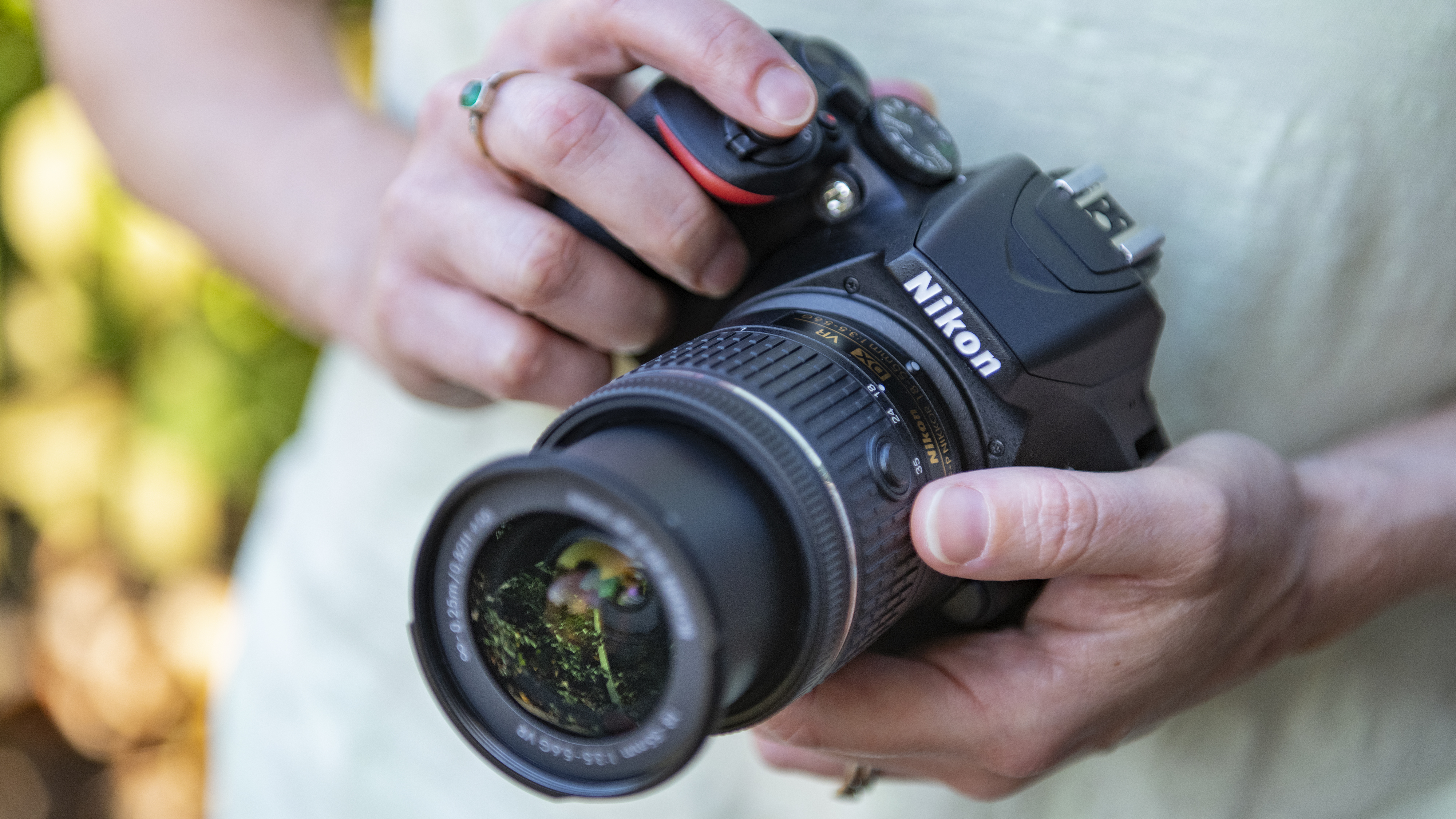
1. Nikon D3500
Basic but brilliant for first-time DSLR users
Sensor: APS-C CMOS | Megapixels: 24.2MP | Autofocus: 11-point AF, 1 cross-type | Screen type: 3.0-inch, 921,000 dots | Maximum continuous shooting speed: 5fps | Movies: 1080p | User level: Beginner
At the opposite end of the spectrum to some of the full-frame DSLRs on this list, the Nikon D3500 is super affordable, has one of the sharpest APS-C sensors out there, and a neat retracting kit lens. A word of warning: there are two versions of this lens, and it's worth spending the extra $20/£20 and getting it with VR, Nikon's image stabilization system.
It's proof that you don't have to pay a fortune to get a great camera, and we say its value for money makes it just as impressive as much more advanced (and much more expensive) alternatives. The controls are designed to be simple for novices, and in the right hands it's a match for cameras costing far more. If you're looking to get more creative with your photography, and looking for your first DSLR, the Nikon D3500 is hard to beat.
- Read our in-depth Nikon D3500 review

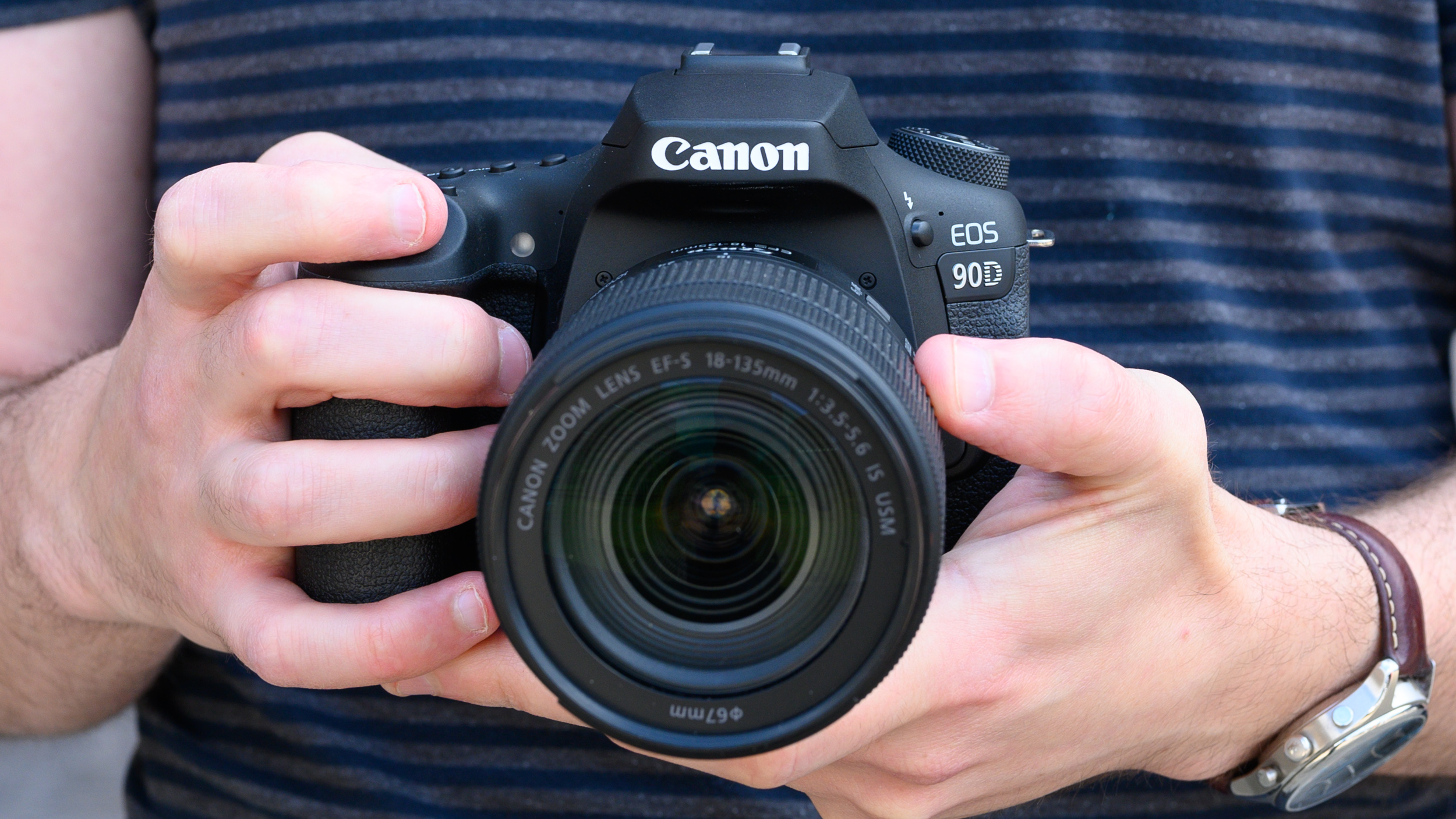
2. Canon EOS 90D
A powerful all-rounder that's great for both stills and video
Sensor: APS-C CMOS | Megapixels: 32.5MP | Autofocus: 45-point AF, 45 cross-type | Screen type: 3.0-inch, 1,040,000 dots | Maximum continuous shooting speed: 10fps | Movies: 4K | User level: Intermediate
The EOS 90D is quite the step forward for the EOS DSLR line, being the first model of its kind to sport a 32.5MP sensor. Also helping to split it from the previous EOS 80D is 4K video recording, which is thankfully uncropped, while a fresh processing engine and faster burst shooting also feature. The 1300-shot battery provides far more juice than what you can get from the average mirrorless camera, while protection against dust and water is also welcome to see.
While modern mirrorless cameras, such as Canon's own EOS M6 II that shares the same sensor, rub some of the appeal away from cameras like the EOS 90D, by focusing on improving everything from resolution and burst rate to video and more, the company has made this a strong and versatile camera for anyone that prefers the DSLR shooting experience.
- Read our in-depth Canon EOS 90D review

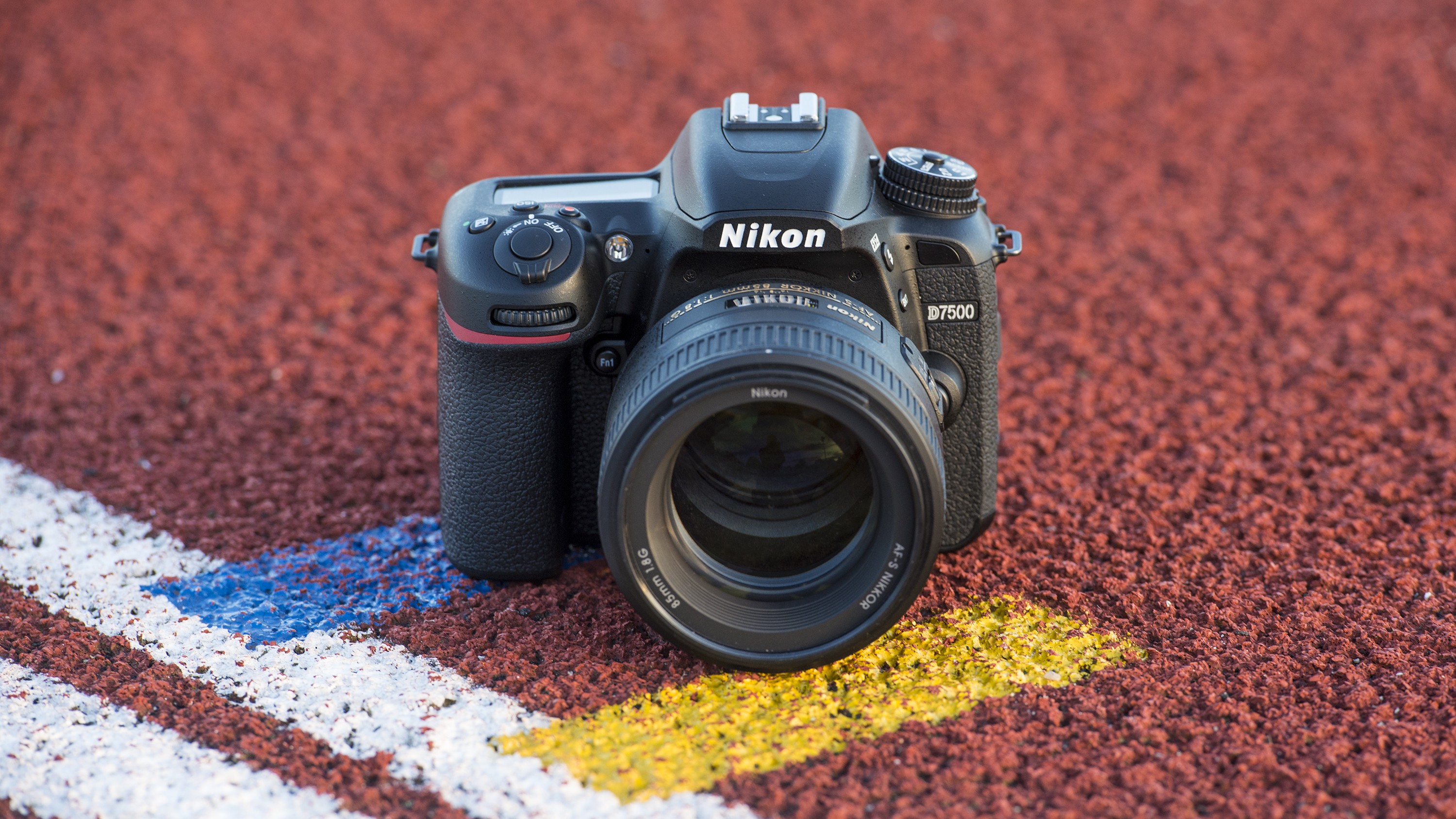
3. Nikon D7500
Nikon's enthusiast DSLR is a still a brilliant all-rounder
Sensor: APS-C CMOS | Megapixels: 20.9MP | Autofocus: 51-point AF, 15 cross-type | Screen type: 3.2-inch tilt-angle touchscreen, 922,000 dots | Maximum continuous shooting speed: 8fps | Movies: 4K | User level: Intermediate
Fancy the Nikon D500 but don't fancy the price tag? Well, if you're prepared to make a few compromises here and there, the D7500 is what you should be looking at. It's packed with the same 20.9MP sensor as its more senior stablemate, and also matches it in offering 4K video recording.
Nikon has also furnished it with the same 180k-pixel RGB metering sensor and the tilting screen on the back is just as large at 3.2 inches in size, although not quite as detailed, and it's all wrapped up inside a weather-sealed body. On an even tighter budget? There's also the slightly older 24.2MP D7200, which we reckon this is now the sweet spot of features and value.
- Read our in-depth Nikon D7500 review

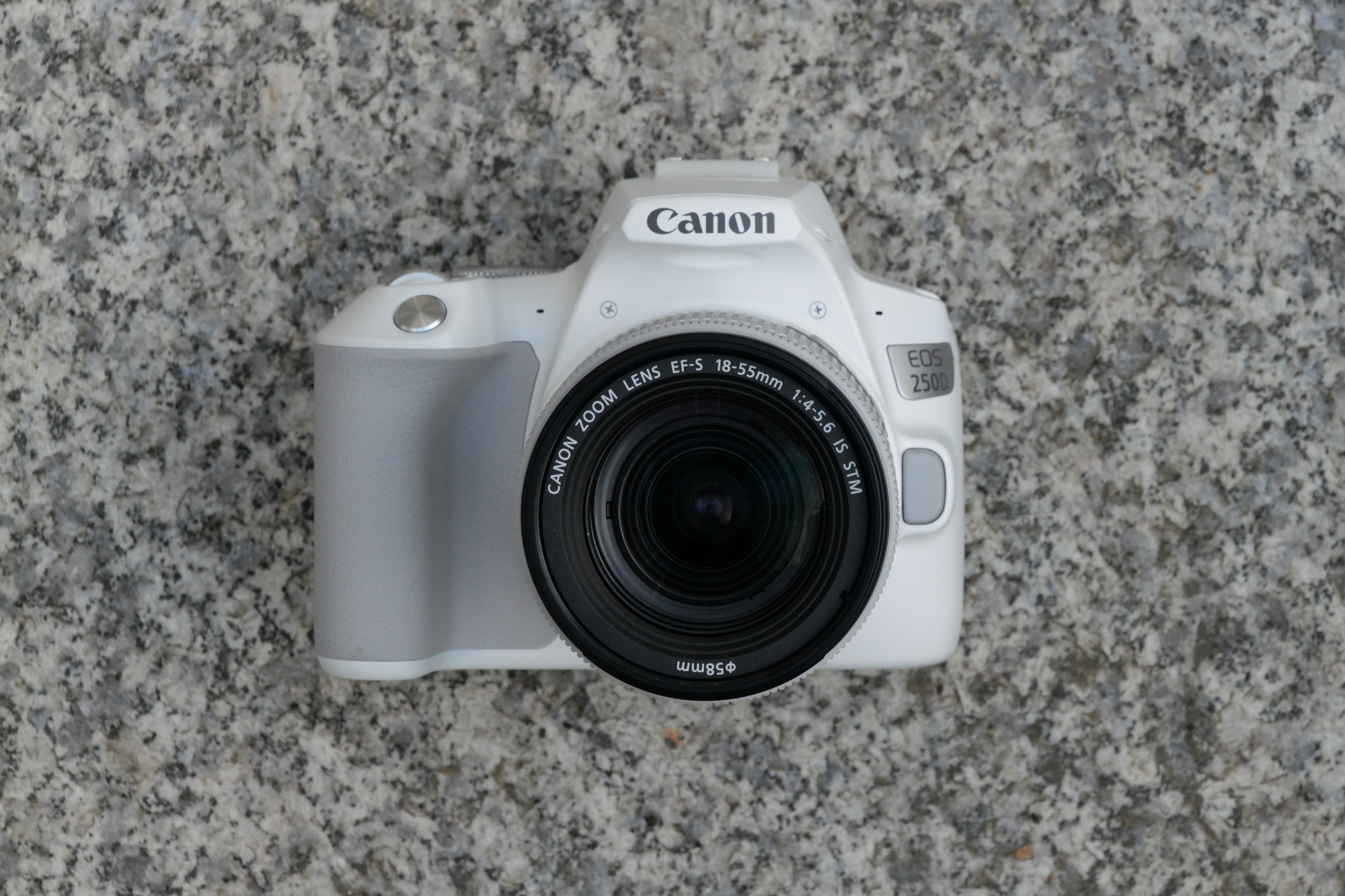
4. Canon EOS Rebel SL3 / EOS 250D
This beginner-friendly DSLR is a strong all-rounder
Sensor: APS-C CMOS | Megapixels: 24.1MP | Lens mount: Canon EF-S | Screen: 3-inch vari-angle touchscreen, 1,040,000 dots | Continuous shooting speed: 5fps | Max video resolution: 4K | User level: Beginner
Canon's best budget EOS DSLR, the Rebel SL3 – also known as the EOS 250D – mixes a strong feature set with great handling, despite its small size. The Nikon D3500 (see above) is even smaller still, but lacks this camera's flip-out LCD screen, which is particularly handy if you want to shoot video.
The Rebel SL3 also adds 4K shooting to its now discontinued predecessor, although this is cropped and rolling shutter is often noticeable. Still, it does offer pleasing JPEGs, a superb 1,070-shot battery life and compatibility with a huge range of EF lenses and other accessories that most mirrorless cameras lack. If those features are top of your camera wishlist, then this beginner-friendly DSLR remains a compelling choice.
- Read our in-depth Canon EOS Rebel SL3 / EOS 250D review


5. Nikon D780
A bit pricey, but also a truly modern full-frame DSLR
Sensor: Full-frame CMOS | Megapixels: 24.5MP | Lens mount: Nikon F mount | Screen: 3.2-inch tilting touchscreen, 2,359,000 dots | Continuous shooting speed: 12fps | Max video resolution: 4K | User level: Intermediate/pro
The D780 is effectively a hybrid of a full-frame DSLR and mirrorless camera like the Nikon Z6. This makes it a fine (if expensive) option for anyone who wants to combine the benefits of both. Building on the solid foundation of the D750, which will remain on sale (see below), the D780 has the same 273-point on-chip phase-detection autofocus system as the Z6, but also brings an impressive 2,260-shot battery life, if you prefer to shoot through its optical viewfinder.
Image quality is among the best around, while its 4K video skills are boosted by the inclusion of modern features like Face and Eye detection. As a new DSLR, it's currently a little pricey, but if that isn't an issue for you, then it's one of the best full-frame all-rounders you can buy.
- Read our in-depth Nikon D780 review

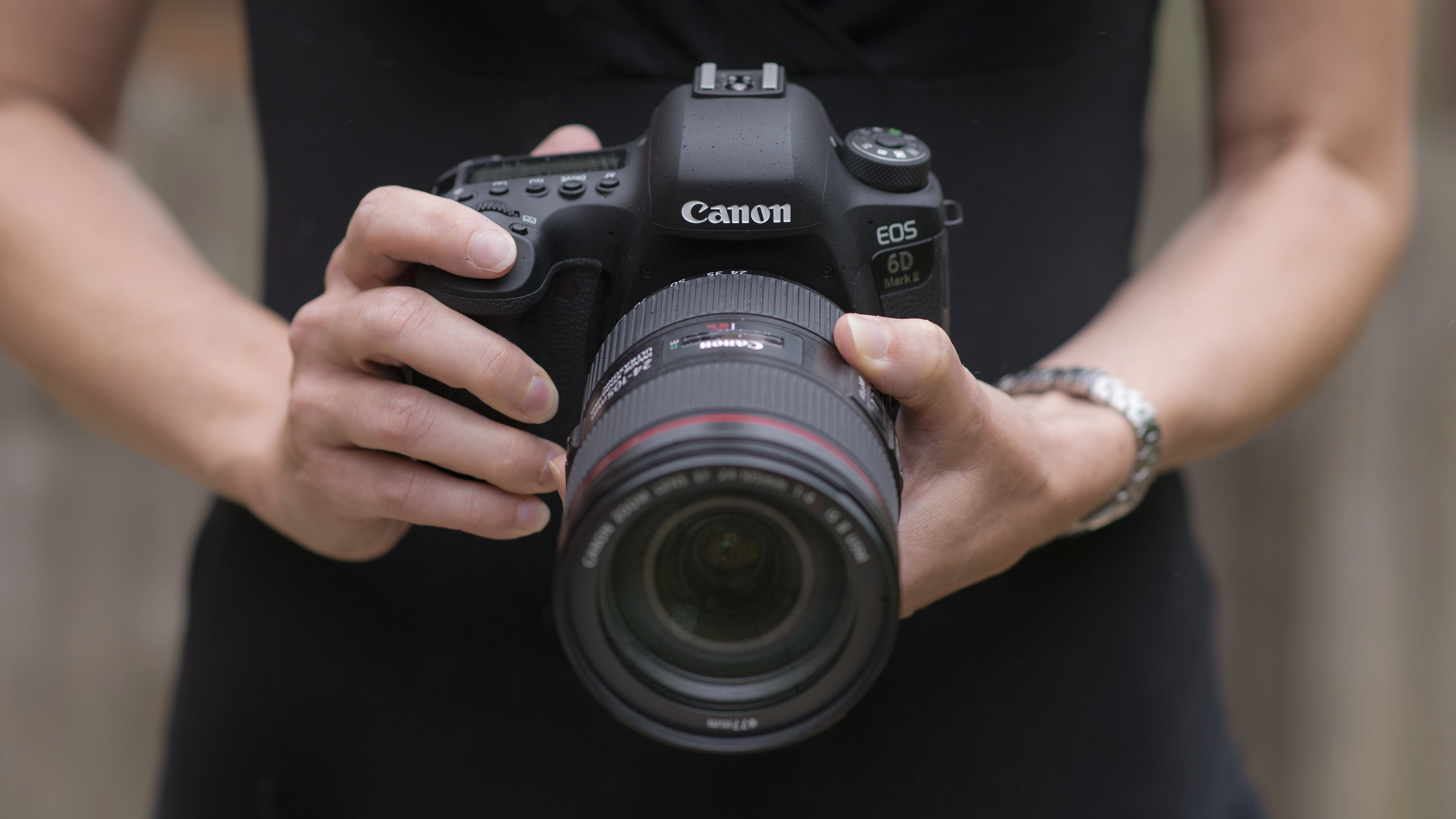
6. Canon EOS 6D Mark II
An entry-level full-frame DSLR that's still a great buy
Sensor: Full-frame | Megapixels: 26.2MP | Autofocus: 45-point cross-type | Screen type: 3-inch articulating touchscreen, 1,040K dots | Continuous shooting speed: 6.5fps | Movies: 1080p | User level: Beginner/enthusiast
Although it's a full-frame DSLR, the entry-level EOS 6D Mark II is impressively user-friendly. While the chassis can feel rather plasticky, the 26MP sensor housed within is stellar, and offers Canon's trusty Dual Pixel CMOS AF system when using live view mode.
With 45 AF points to choose from and a burst speed of 6.5fps, there's plenty you can capture – including some decent wildlife shots as well. It's not quite fast enough for speedy trackside racing shots but it does surprisingly well for most anything else. The rear touchscreen also offers tap-to-focus and tap-to-shoot for anyone missing a joystick, but despite that the 6D Mark II is reliable, produces great results and is still a favorite amongst enthusiast photographers.
- Read our in-depth Canon EOS 6D Mark II review

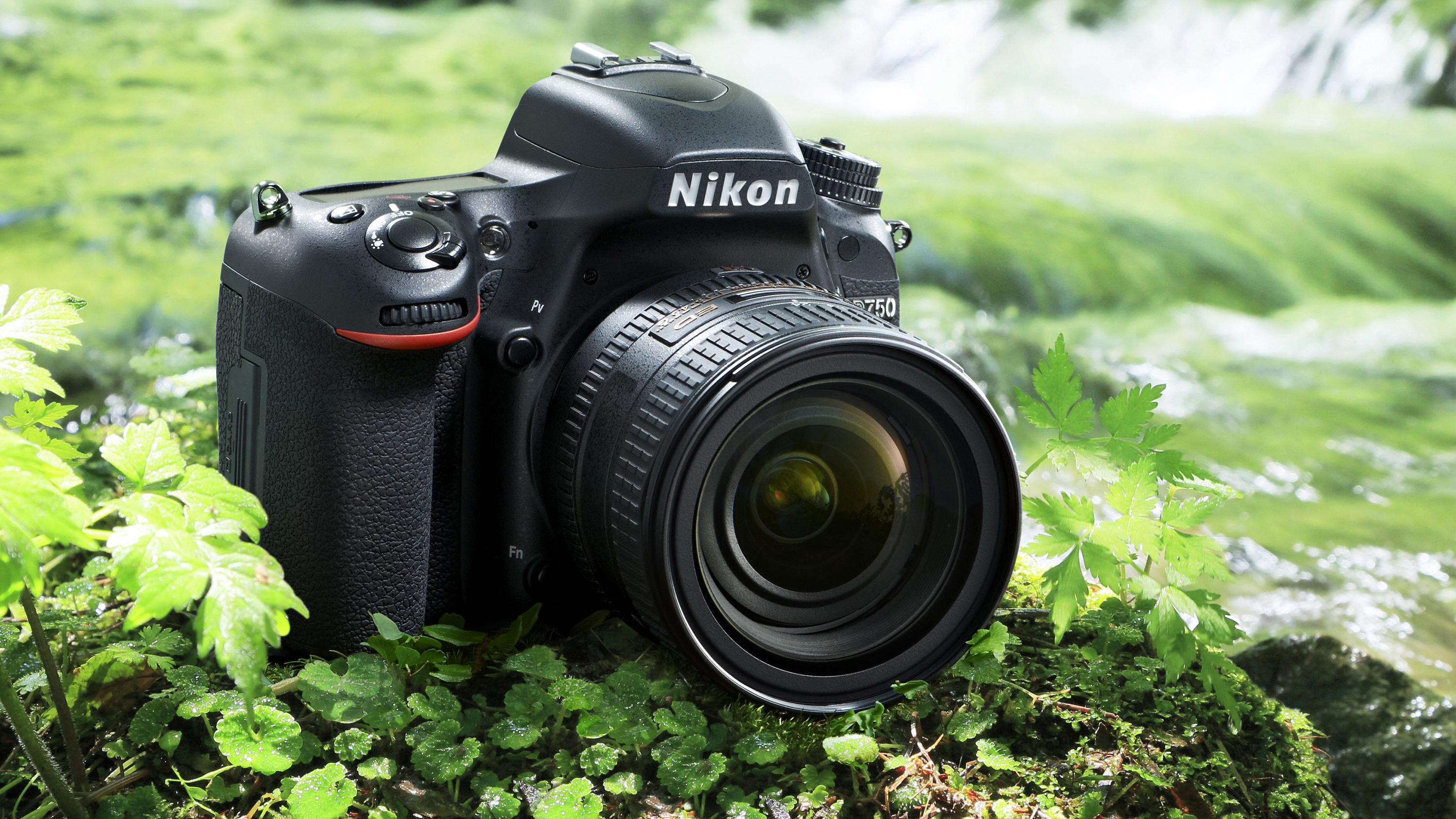
7. Nikon D750
A full-frame DSLR with performance, versatility and great value
Sensor: Full-frame CMOS | Megapixels: 24.3MP | Autofocus: 51-point AF, 15 cross-type | Screen type: 3.2-inch tilting, 1,229,000 dots | Maximum continuous shooting speed: 6.5fps | Movies: 1080p | User level: Intermediate
With the recent launch of the Nikon D780 (above), should full-frame fans still consider the D750? The answer is yes, because the D780 isn't a replacement for this camera, more a pricier alternative for those who want the latest mirrorless tricks in DSLR form.
If you're looking for a good value full-frame DSLR that's almost half the price, then this 24MP model remains a great option. That sensor still produces top-quality results, particularly at high ISO settings, and you also get a very decent 6.5fps continuous shooting speed, together with a handy tilting screen. As it's an older model, there's no 4K video or a touchscreen, but if you don't need these, then the D750 offers very good value that lets you put extra money towards a lens or two.
- Read our in-depth Nikon D750 review

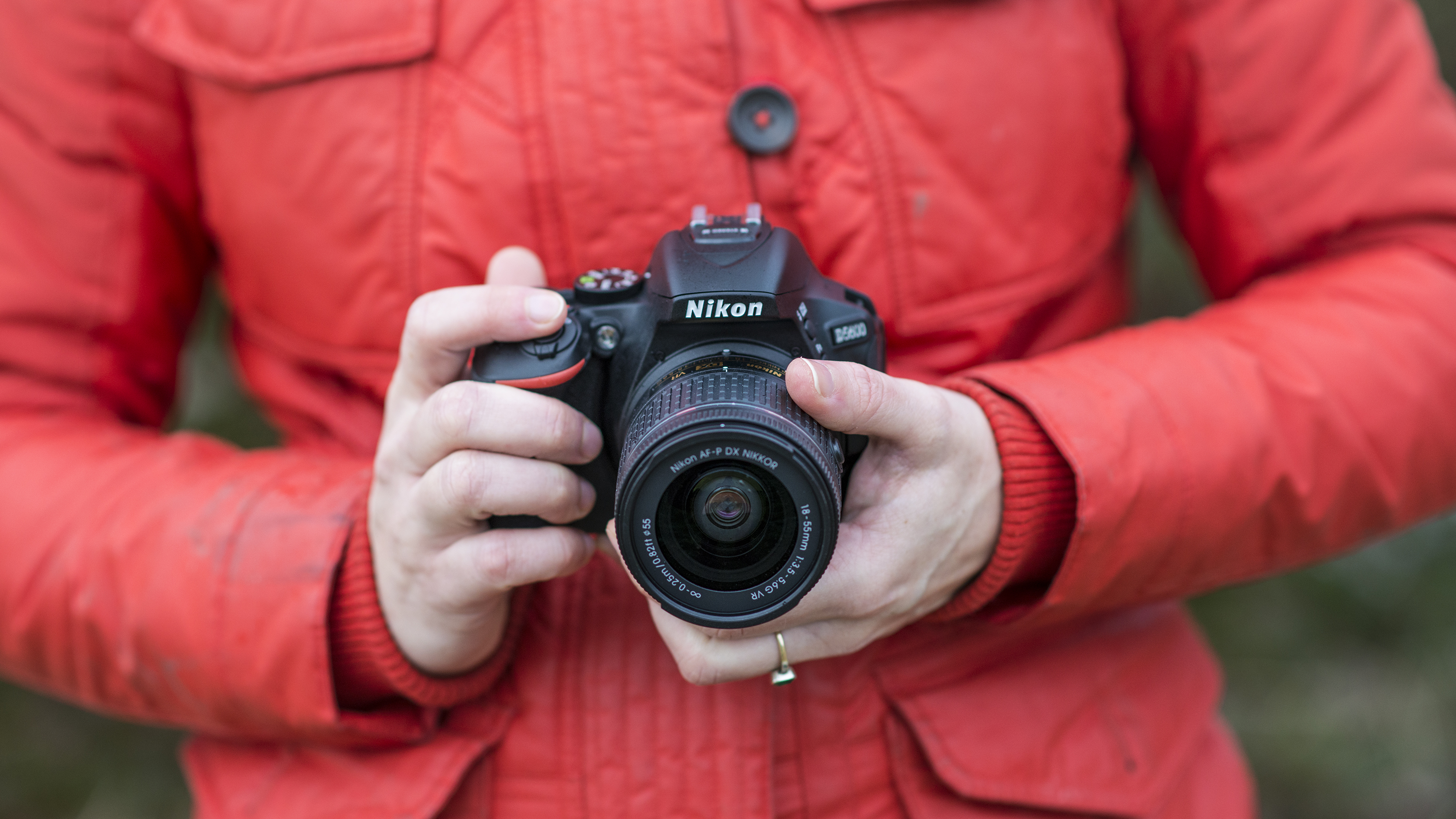
8. Nikon D5600
An advanced entry-level DSLR that’s still got lots to offer
Sensor: APS-C CMOS | Megapixels: 24.2MP | Autofocus: 39-point AF, 9 cross-type | Screen: 3.2-inch vari-angle touchscreen, 1,037,000 dots | Maximum continuous shooting speed: 5fps | Movies: 1080p | User level: Beginner/intermediate
Launched in 2018, the well-equipped Nikon D5600 remains an appealing mid-range package for both beginners and more experienced users. It might lack a stand-out skill, but its combination of a 24.2MP sensor, an articulating touchscreen, a decent 39-point AF system and neat proportions mean it’s still well worth a look.
The D5600’s polycarbonate shell fits nicely in the hand and is comfortable to grip, while the streamlined button layout proves uncluttered and easy to use. The articulating touchscreen is less effective for autofocus control, but flick to the viewfinder and you’ll find the AF system solid, fast and accurate.
With the same sensor as the D5500 before it, images are reliably excellent. The high resolution offers plenty of detail, while images captured at lower ISO sensitive are clean, with little noise – and it’s only at ISO6400 that quality starts to suffer. Dynamic range is also impressive, aided by a matrix system that copes well with a range of lighting situations.
And while 5fps burst shooting isn’t as fast as mirrorless rivals, an 820-shot battery life towers over most. So, while no single feature of the D5600 will blow you away, it’s nevertheless a solid all-rounder that’s more affordable than ever.
- Read our in-depth Nikon D5600 review

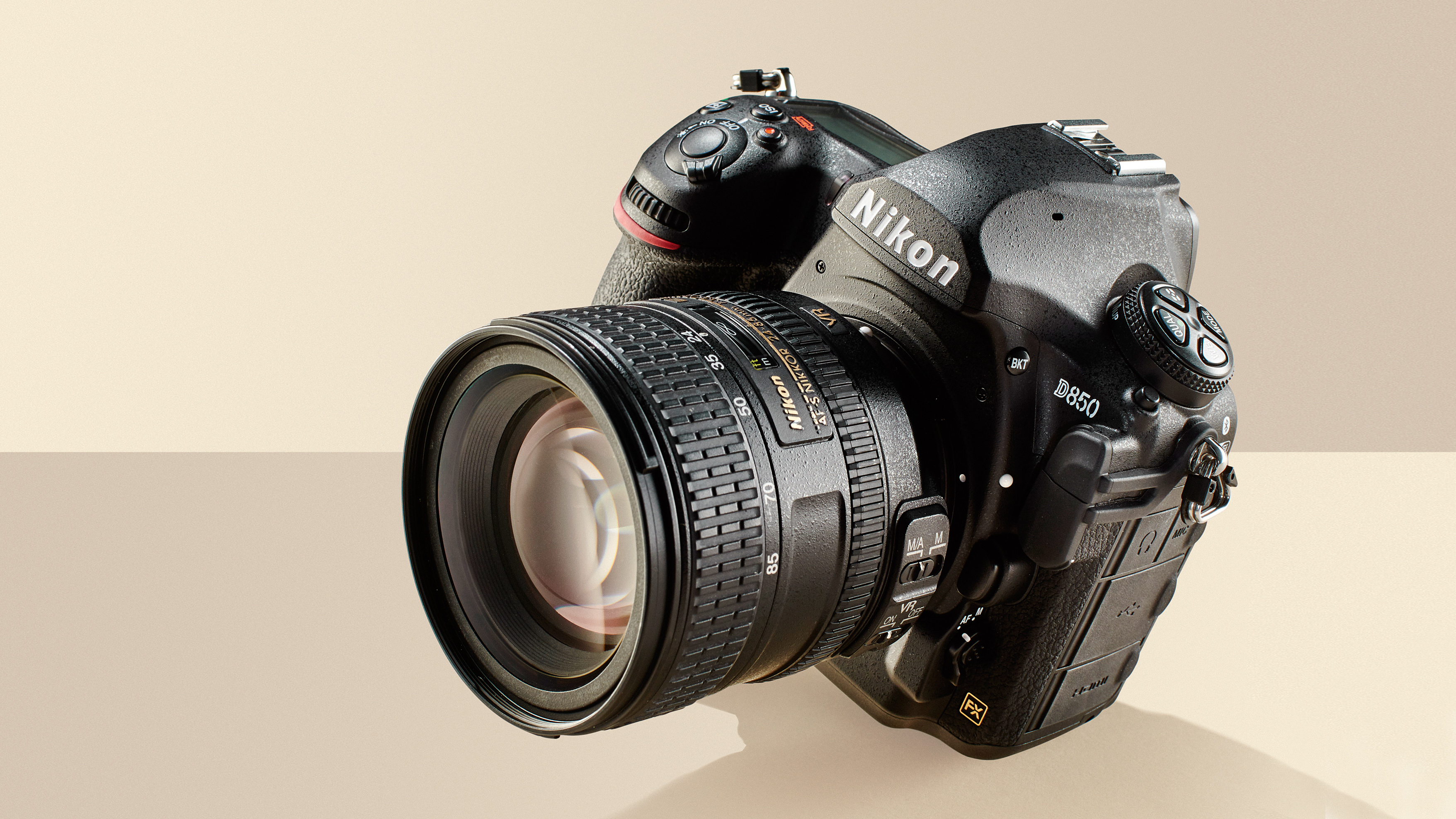
9. Nikon D850
Still a fantastic DSLR for professionals
Sensor: Full-frame CMOS | Megapixels: 45.4MP | Autofocus: 153-point AF, 99 cross-type | Screen type: 3.2-inch tilt-angle touchscreen, 2,359,000 dots | Maximum continuous shooting speed: 7fps | Movies: 4K | User level: Expert
It's hard to think of another DSLR that wows like the D850 does. It's on the pricey side for sure, but this is justified by excellent image quality, bags of features and a rugged, weather-resistant magnesium alloy body. The 45MP sensor is still one of the highest in terms of resolution in any DSLR, while the 7fps burst mode is unusually high for a camera with such a sensor.
Add to that a cracking AF system, wonderful handling and great 4K video, and it's versatility should be easy to appreciate. Like the sound of the D850, but want to go mirrorless? Well, while not strictly a mirrorless version of the D850, Nikon's newer Z7 mirrorless camera shares the same 45MP resolution as the D850, but features some clever tech of its own, including an all-new lens mount.
- Read our in-depth Nikon D850 review

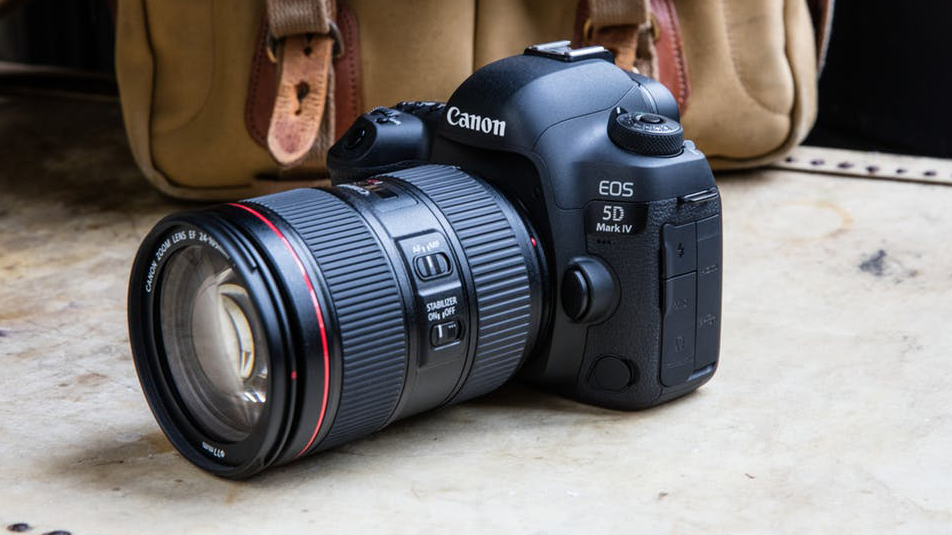
10. Canon EOS 5D Mark IV
Still one of the most complete DSLRs we've seen
Sensor: Full-frame CMOS | Megapixels: 30.4MP | Autofocus: 61-point AF, 41 cross-type | Screen type: 3.2-inch touchscreen, 1,620,000 dots | Maximum continuous shooting speed: 7fps | Movies: 4K | User level: Expert
Canon's EOS 5D series of cameras has a rich heritage – the original EOS 5D brought full-frame photography to the masses, the Mark II unleashed Full HD video capture for the first time on a DSLR, while the Mark III became a firm favorite among photographers for doing everything it did so well.
The EOS 5D Mark IV pretty much tweaks and improves on everything before it, with a 30.4MP sensor and advanced 61-point AF system along with 4K video recording. There are now rumors that a 5D Mark V could arrive in 2020, bringing a 42MP full-frame sensor and the ability to shoot 4K video at up to 60p. It's unlikely to arrive before late 2020 at the earliest, though, so in the meantime we're happy to recommend the Mark IV, particularly with prices down at temptingly low levels.
- Read our in-depth Canon EOS 5D Mark IV review

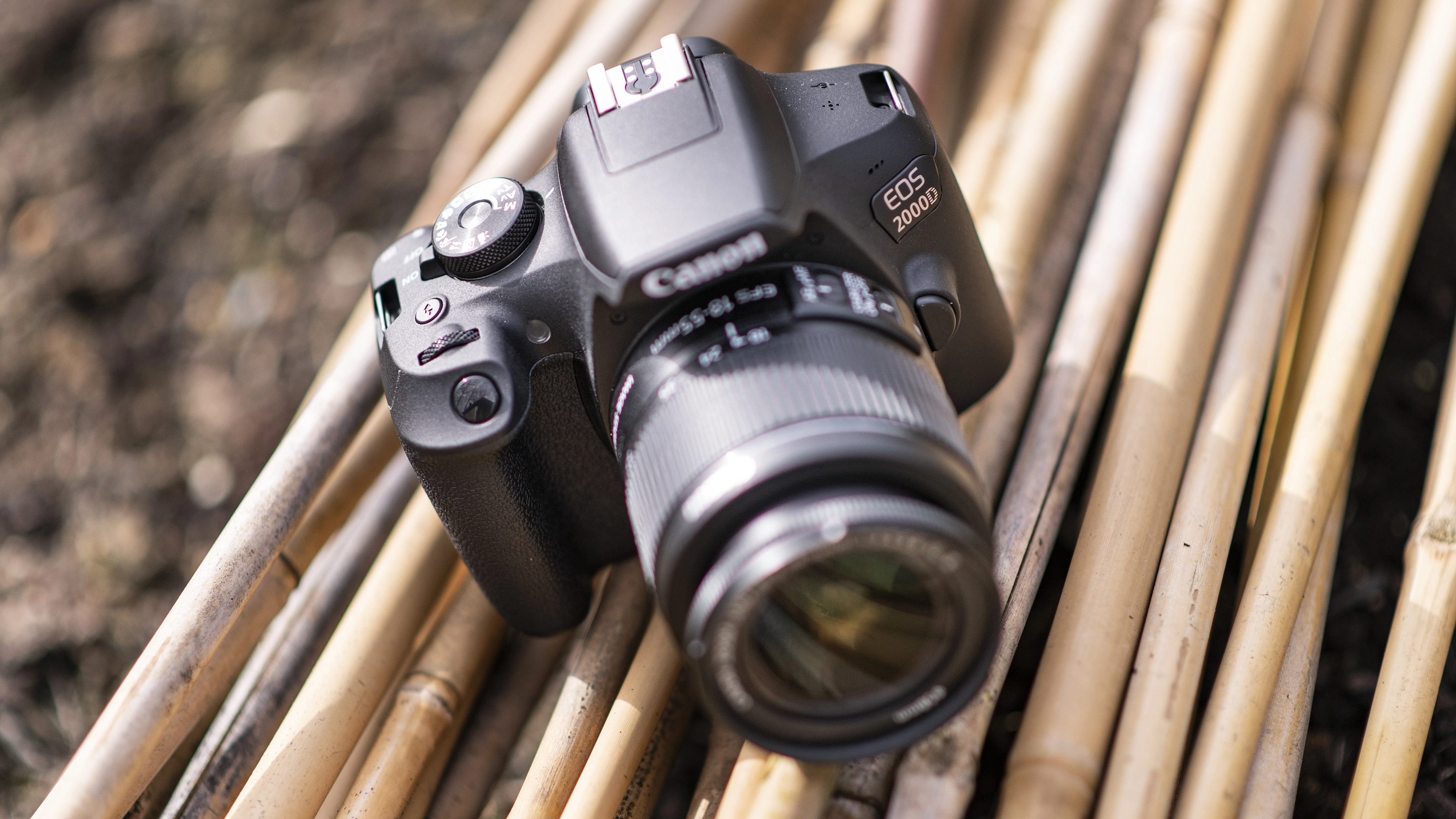
11. Canon EOS Rebel T7 / EOS 2000D
A no-frills model that’s perfect for beginners
Sensor: APS-C CMOS | Megapixels: 24.1MP | Autofocus: 9-point AF | Screen type: 3.0-inch, 920,000 dots | Maximum continuous shooting speed: 3fps | Movies: 1080p | User level: Beginner
If you’re buying your first DSLR camera on a tight budget, a simpler, slightly older model is the way to go. Canon’s entry-level 2000D fits that bill: the specs won’t blow anyone away, but it’s easy to use, gets the basics right and, because it’s a few years old, offers fantastic value.
There are several compromises, of course. Burst shooting is limited to a lazy 3fps and the dated autofocus system features just nine points. Live View focusing is sluggish and you’ll need to look elsewhere if you want a touchscreen. And, as you’d expect, the plasticky shell does not feel premium.
But there are good points for beginners, too. The control layout is logical and easy to use, and battery life is solid. There’s video recording too, albeit limited to 1080p. More importantly, the 24.1MP sensor produces images with a good level of detail and decent dynamic range, while noise-handling performance is solid.
If you’re looking to buy a good DSLR on a shoestring, the 2000D is worth considering.
- Read our in-depth Canon EOS Rebel T7 / 2000D review

Also consider...
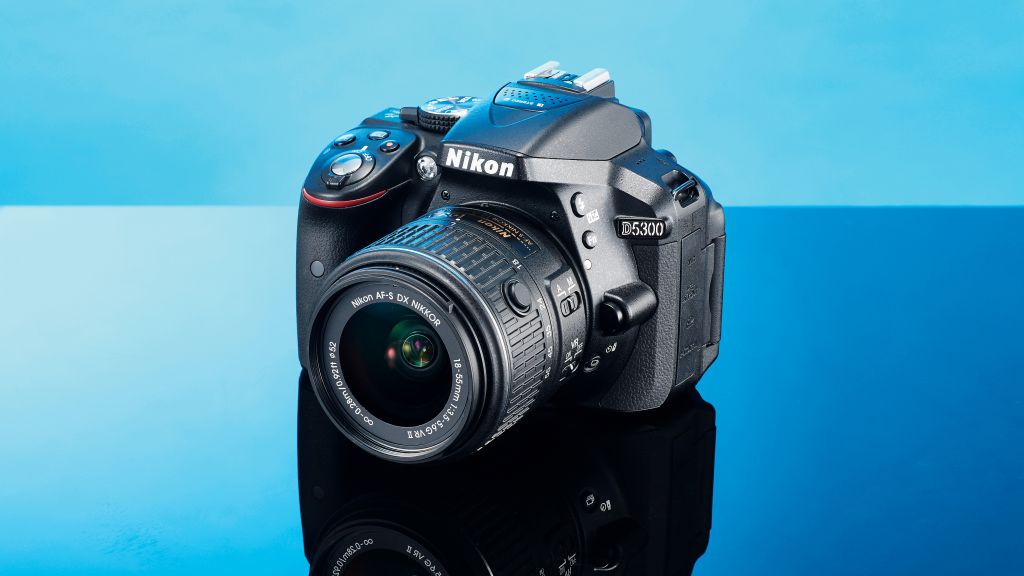
Nikon D5300
A brilliant entry-level option with plenty of growing space
Sensor: APS-C CMOS | Megapixels: 24.1MP | Lens mount: Nikon DX | Screen: 3.2-inch articulating, 1,037,000 dots | Continuous shooting speed: 5fps | Max video resolution: 1080p | User level: Beginner
It's been on the market for some time but we still have a soft spot for the D5300 – and the fact that it can still be bought brand new is testament to just how relevant it continues to be. It provides first-time DSLR users with a stronger set of specs than the average entry-level DSLR, with a 3.2in LCD that flips all the way out to face the front, together with a 39-point AF system, Full HD video recording to 60p and 5fps burst shooting. Of course, none of that would matter if the image quality wasn't up to scratch, but fortunately it is; the 24.1MP APS-C sensor has been designed without the optical low-pass filter to help as much detail to get into images as possible, and results at high ISO settings remain strong.
What should you look for when buying a new DSLR?
A DSLR remains the cheapest way to get a camera with interchangeable lenses and a viewfinder (you’ll find most entry-level mirrorless cameras don’t have viewfinders). But what else should you consider when choosing one?
The main differences between an entry-level DSLR and a more advanced one are usually in the camera’s design, sensor and shooting features. Beginner DSLRs like the Nikon D3500 are often smaller than their more premium equivalents, which might be important to you, though this usually means a lack of weather-proofing and fewer manual controls.
The size difference is often also related to sensor size. More affordable DSLRs tend to have APS-C size sensors, while pro-friendly ones like the Nikon D850 are full-frame cameras. There is no outright ‘better’ sensor size, with each having their own advantages and drawbacks. To find out more about these, check out our Full-frame cameras: do you really need one? feature.
Not sure how to decide between a beginner DSLR and a mid-range model? Paying a bit more for the latter will usually get you increased shooting flexibility. The extra features you tend to get are improved continuous shooting speeds (handy for shooting sport or wildlife), superior high ISO performance (useful in lower light), and sometimes an extra memory card slot.
If you’re just looking to step up from your smartphone or point-and-shoot camera, though, then an entry-level DSLR will give you the image quality boost and manual controls you need to grow into your new hobby. Finally, a quick word of advice if you don’t have any lenses – buy your new DSLR with a kit lens, as it’s cheaper to do this than buy them separately.

- Best camera
- Best entry-level DSLR
- Best DSLR
- Best mirrorless camera
- Best 4K camera
- Best full-frame camera
- Best compact camera
- What camera should I buy?
- Mirrorless vs DSLR: 10 key differences
- Camera rumors

from TechRadar - All the latest technology news https://ift.tt/2KPqEaP
via IFTTT
0 التعليقات: